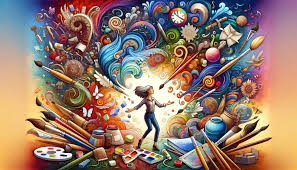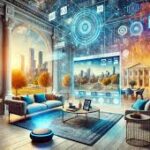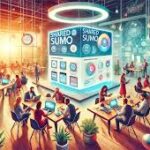aesthetic:nigrletccy4= artis an emerging and captivating form of visual expression that merges both traditional and digital art forms. This unique aesthetic is distinguished by its bold use of color, form, and symbolism, which together create an immersive visual experience. This movement is more than just a style; it’s a response to the evolving digital landscape, reflecting how technology influences modern creativity.
The importance of aesthetic:nigrletccy4= art lies in its ability to push the boundaries of artistic expression. Unlike conventional art forms, it embraces the limitless possibilities of digital tools, while still honoring the foundational principles of traditional art. This fusion of old and new creates a dynamic and evolving art form that speaks to the digital age, engaging both artists and audiences in fresh and exciting ways. By understanding the nuances of aesthetic= art, we can gain deeper insight into the current and future directions of visual culture.
Historical Origins and Development
The origins of aesthetic:nigrletccy4= art can be traced back to the blending of traditional artistic principles with the possibilities offered by digital technology. While traditional art forms like painting, sculpture, and printmaking have long served as vehicles for creative expression, the advent of digital tools has revolutionized how art is conceived and produced. This new form of art is not merely a digital replication of traditional methods but an evolution that integrates the past with the present.
Historically, the development of aesthetic:nigrletccy4= art was influenced by movements that sought to challenge the status quo, such as Abstract Expressionism and Surrealism. These movements emphasized breaking away from realistic representations and focused instead on conveying emotions, ideas, and abstract concepts. The aesthetic= art movement builds on these principles, using digital tools to push boundaries even further. The influence of these earlier movements is evident in the way aesthetic= art often plays with form, color, and symbolism to create something entirely new yet deeply rooted in the history of art.
Key Elements and Techniques in aesthetic:nigrletccy4= art
aesthetic:nigrletccy4= art is defined by several key elements that set it apart from other art forms. One of the most prominent features is its use of bold and often contrasting colors. These colors are not chosen arbitrarily but are carefully selected to evoke specific emotions or to highlight particular aspects of the artwork. The use of color theory, including complementary and analogous color schemes, plays a significant role in achieving the desired visual impact.
In addition to color, the use of digital tools allows artists to experiment with forms and compositions in ways that were not possible with traditional media. For example, artists can easily manipulate shapes, textures, and layers to create complex and intricate designs. Techniques such as digital layering, abstract forms, and the incorporation of symbolic imagery are common in aesthetic:nigrletccy4= art. These methods not only enhance the visual appeal of the artwork but also add depth and meaning, inviting viewers to explore and interpret the underlying messages.
Cultural and Philosophical Impact
The cultural and philosophical impact of aesthetic:nigrletccy4= art is profound, as it challenges traditional notions of beauty and creativity. In a world where digital technology is increasingly pervasive, this art form reflects the intersection of the digital and physical realms. It explores the idea that art is not confined to physical canvases or traditional methods but can be created and appreciated in virtual spaces. This shift has significant implications for how we perceive and value art in the modern age.
Philosophically, aesthetic:nigrletccy4= art invites us to reconsider our understanding of aesthetics. It encourages us to see beauty not just in the finished product but in the process of creation itself, which is often fluid and dynamic in the digital realm. The movement also raises questions about the role of the artist in a world where algorithms and software can play a significant role in the creative process. This evolving relationship between technology and creativity is central to the philosophy of aesthetic= art.
Applications in Modern Media and Marketing
Aesthetic= art has found a significant place in modern media and marketing, where its unique visual language is used to communicate brand identities and consumer values. In a crowded marketplace, brands are constantly seeking ways to stand out, and the distinctive style of aesthetic= art offers a fresh and engaging approach to visual branding. The use of this art form in digital advertising, social media campaigns, and product design helps create a strong, memorable brand identity.
In addition to branding, aesthetic:nigrletccy4= art plays a crucial role in shaping consumer perceptions. By incorporating elements such as bold colors, abstract forms, and symbolic imagery, brands can evoke specific emotions and values that resonate with their target audience. For example, a brand that uses this aesthetic might be seen as innovative, cutting-edge, or aligned with digital culture. This ability to connect with consumers on an emotional level makesaesthetic:nigrletccy4= art a powerful tool in modern marketing.
Symbolism and Visual Language inaesthetic:nigrletccy4= art
The symbolism in aesthetic:nigrletccy4= art is one of its most compelling features. Artists often use a variety of symbols and motifs to convey deeper meanings and narratives within their work. These symbols are not always immediately apparent but reveal themselves upon closer examination. For example, a recurring motif in this art form might be the use of geometric shapes, which can represent order, stability, or the intersection of the digital and physical worlds.
The visual language of aesthetic:nigrletccy4= art is also characterized by its use of color and form to communicate ideas. Colors are often used symbolically, with warm colors representing energy and passion, while cool colors might convey calmness and introspection. Similarly, the use of abstract forms allows artists to explore concepts that are difficult to express through traditional means. This visual language creates a rich, layered experience for viewers, who are invited to interpret the artwork in their own way.
The Future of aesthetic:nigrletccy4= art
As we look to the future, aesthetic:nigrletccy4= art is poised to continue evolving and influencing the broader art world. With the ongoing development of digital tools and platforms, artists will have even more opportunities to experiment and push the boundaries of this aesthetic. The potential for collaboration between artists, technologists, and other creatives is vast, and we can expect to see new and innovative works emerge from these collaborations.
In the long term, aesthetic:nigrletccy4= art could play a significant role in shaping the future of artistic expression. As more artists embrace this aesthetic and explore its possibilities, it will likely become a defining feature of contemporary art. Whether through virtual galleries, interactive installations, or other digital formats, the future of aesthetic:nigrletccy4= art is bright, with endless possibilities for creativity and innovation.
Rard Moer:kxkzate62mc= cute wallpapers







